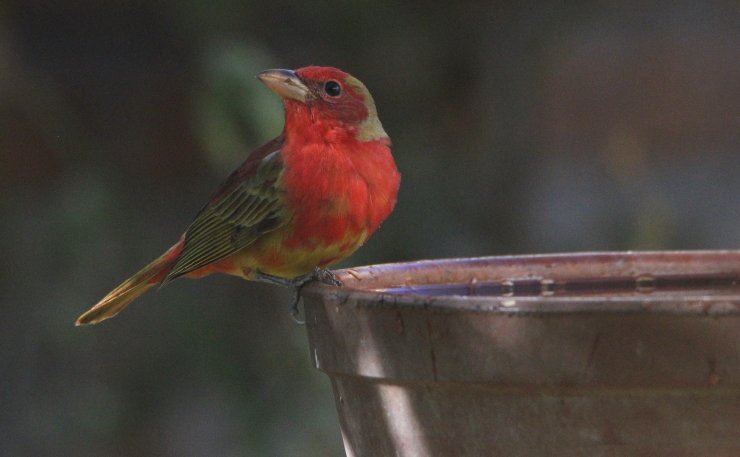
I promised last week to reveal (this week) which Very Special Birds had allowed themselves to be seen on that week’s Monday outing. But the temptation had been mounting to talk about how much activity my birdbath has been drawing to my garden now that Morelia is in the height (depth?) of its dry season. So I’ll have to make myself a liar, and promise to make that reveal later.
The tipping point was the morning of February 10th, when I saw 20 species during two hours simply by looking out my back window as I had breakfast and read the news online. (My Mexican birding buddies and I had a good laugh a few weeks ago when we took an online poll from Sweden about how the pandemic has affected our birding. It included a question about how many species one has seen in one’s yard, total, with the options being 0-5, 6-10, 11-15, 16-20, or 20+. My yard is nothing special, but even so, over the years I have seen more than 75 species there! It’s good to live in Mexico.)
That day, a Wednesday, was special. But every day something fun turns up, and most days I find myself submitting an eBird list. The list starts with those species that are always present: House Sparrows (oh, so many House Sparrows!), Inca Doves, 2 or 3 Broad-billed Hummingbirds and one Berylline Hummingbird. Our endemic Black-vented Orioles don’t visit every day, but can turn up at any time year-round.
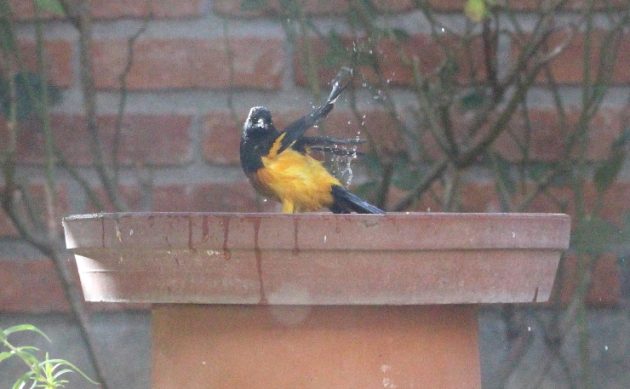
This Black-vented Oriole knows exactly what to do with a birdbath.
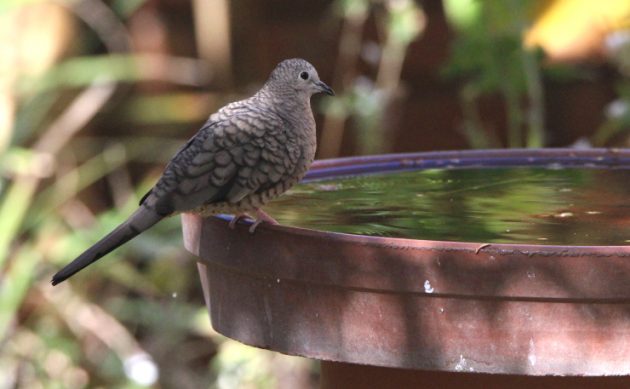
Inca Doves can look a bit drab.
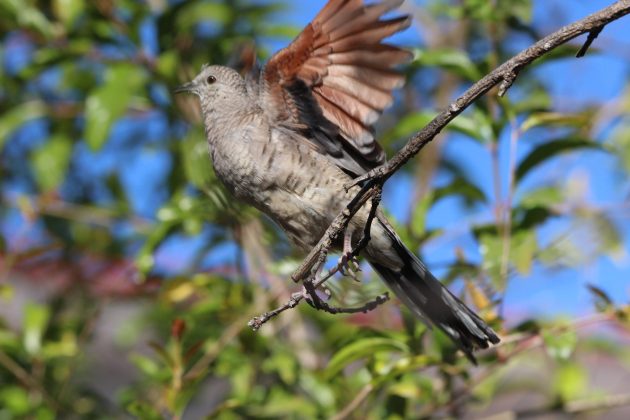
Until they don’t.
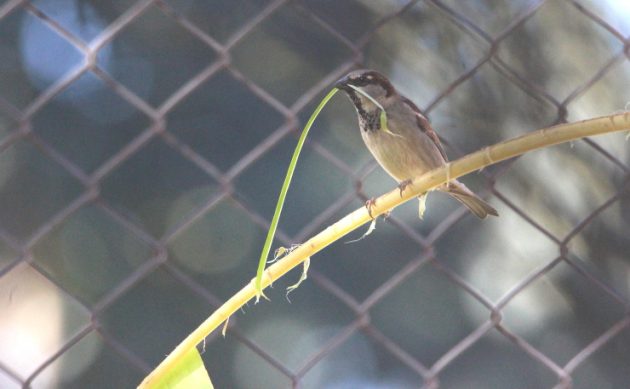
My House Sparrows, Weaver Finches that they are, have discovered how to pull tough-but-flexible strips off my banana leaves to weave into their nests. I think that is close to tool-making.
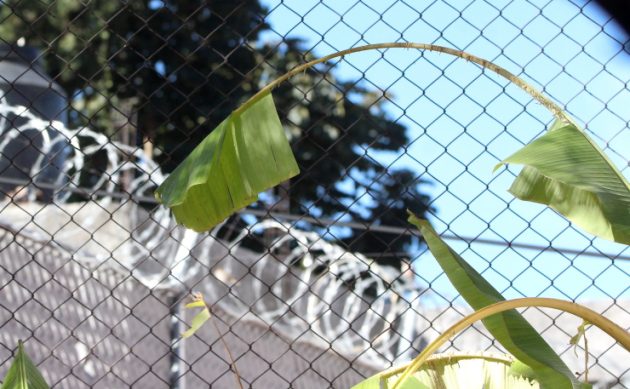
This is not how banana leaves are supposed to look.
Then there are other locals that, while common, tend to arrive more in winter: a Bewick’s Wren, House Finches (which love neighboring yards but, for some reason, mostly avoid mine until the dry season), Lesser Goldfinches, a Canyon Towhee or two, and a brilliant orange-red male Vermilion Flycatcher.

Canyon Towhees used to be daily visitors to my garden, but as it became more “forest-like”, they became rarer.
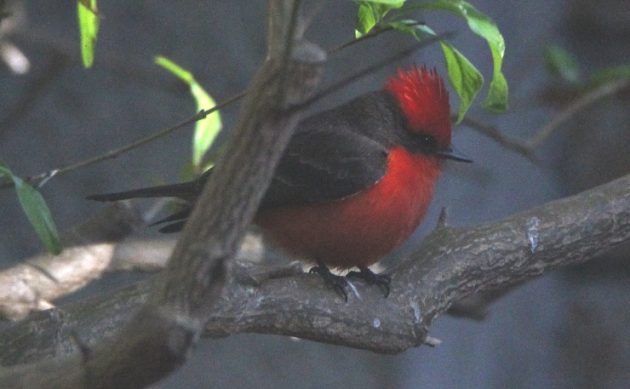
My little Vermilion Flycatcher chose some deep shade for perching above the birdbath.
Winter, of course, is our season for receiving many migratory species. Among the constant winter visitors to my garden are several Warblers: Wilson’s, Yellow-rumped (Audubon’s), Orange-crowned, Nashville, and Black-throated Gray. (This year has been unusual for the numbers of individual Warblers I am seeing each day.) Several Warbling Vireos also turn up daily, and I often see Hooded Orioles. Lincoln Sparrows have been unusually abundant this year. But I really get excited when a male Summer Tanager or a pair of Western Tanagers join the party. A male Indigo Bunting has been an especially welcome visitor this year. Perhaps the Northern House Wren and Blue-gray Gnatcatchers have already headed north? I haven’t seen them in a few weeks.
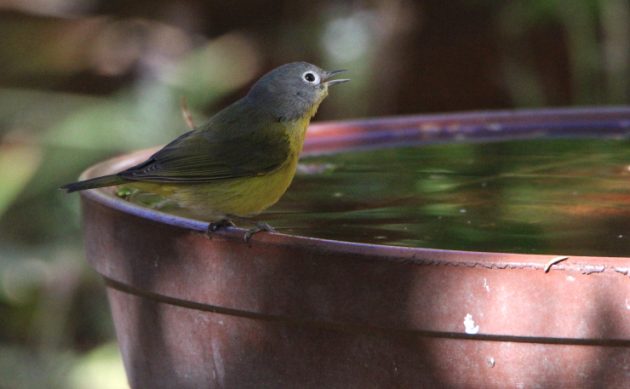
Nashville Warbler
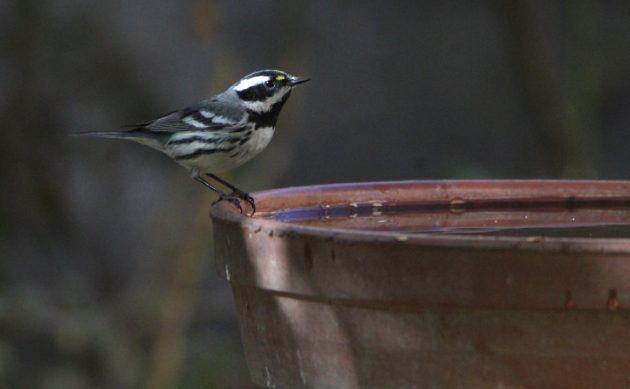
Black-throated Gray Warbler
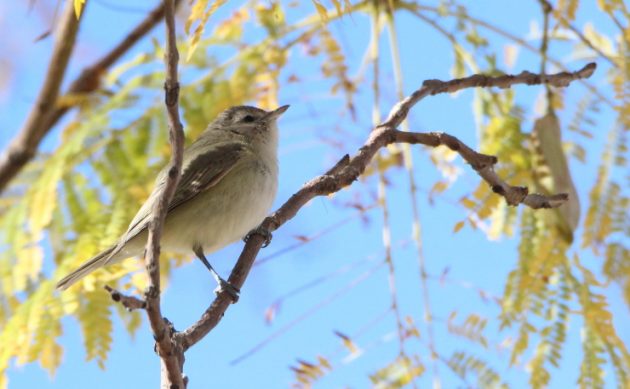
Warbling Vireo
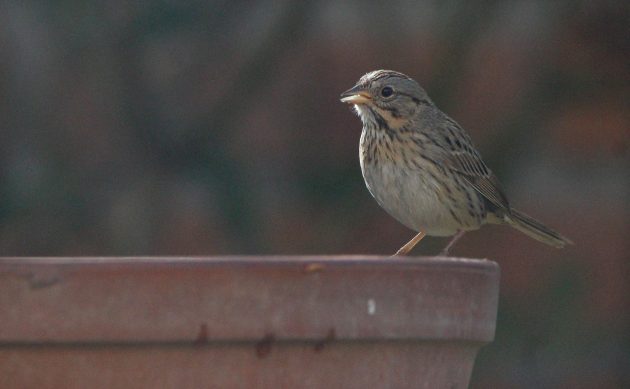
I rarely, almost never, saw Lincoln’s Sparrows in my garden until this year. Now I am seeing several each day. Not that there’s anything wrong with that.
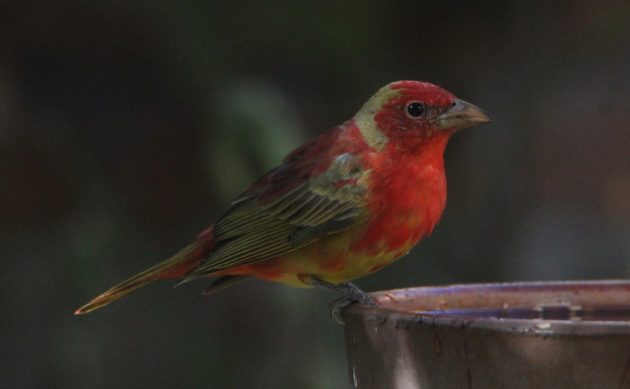
This wonderful male Summer Tanager has only been around for seven weeks, and it is already showing more red, and less yellow.
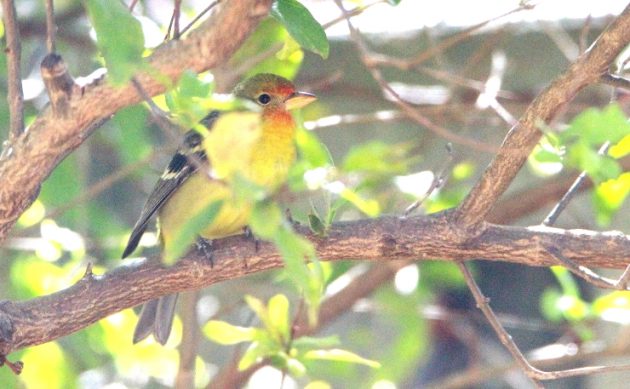
I almost thought I would have no images of this Western Tanager to show, but it finally turned up for its photos session yesterday. The Indigo Bunting, however, did stand me up.
And then, there are the locals who turn up for a drink of water or a bath, in spite of their natural tendency to avoid humans. These are, for me, the stars of the show. During our dry spring season, I often see a Blue Mockingbird (daily, this year), Black-backed Oriole, Groove-billed Anis, and an occasional Rufous-backed Robin. I never really know when a Golden-fronted Woodpecker or Canyon Wren may turn up. But I do know that Bronzed Cowbirds and a Spotted Wren are likely to appear soon; they seem to tough it out longer than the other locals, but eventually arrive.
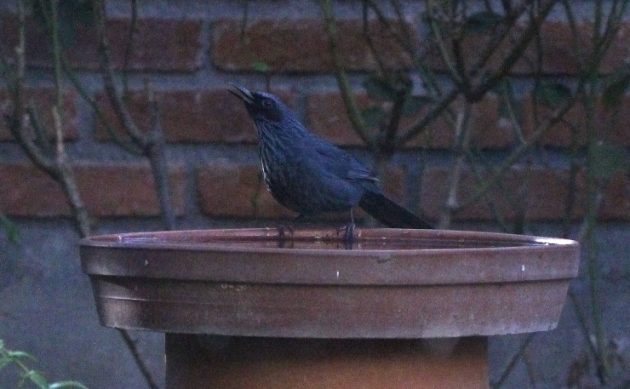
This image of my Blue Mockingbird is mostly to prove its presence. I took it through the back window. (Explanation follows.) The same is true for my images of the Black-vented Oriole, Lincoln Sparrow, and Western Tanager.
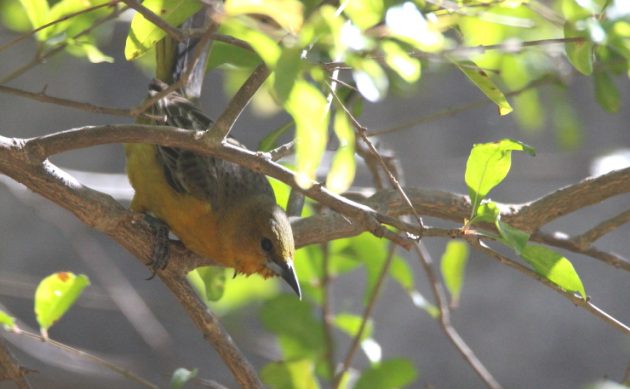
Female and immature Orioles can be very difficult to tell apart, but I’m pretty sure this is an immature Streak-backed Oriole, instead of the similar Hooded or Orchard Orioles. If so, it is a rare garden visitor.
I should note that, with all of its virtues, my yard is a terrible place for bird photography. It is small, full of plants, and mostly shady. Because of its small size, there is a good chance I will scare any bird of which I can get a clear view. (I need a blind, or a ghillie suit.) I did my best, over the past week, to photograph some of the birds mentioned in this post. But some of the photos had to be taken through our back window — by far the easiest option, but a sure way to get a fuzzy photo. Still, I hope I gave you a good sense of my little piece of paradise! All of these photos are from this past week.













Great post! Writing this on the 13th floor of a Shanghai building, I envy you your garden …